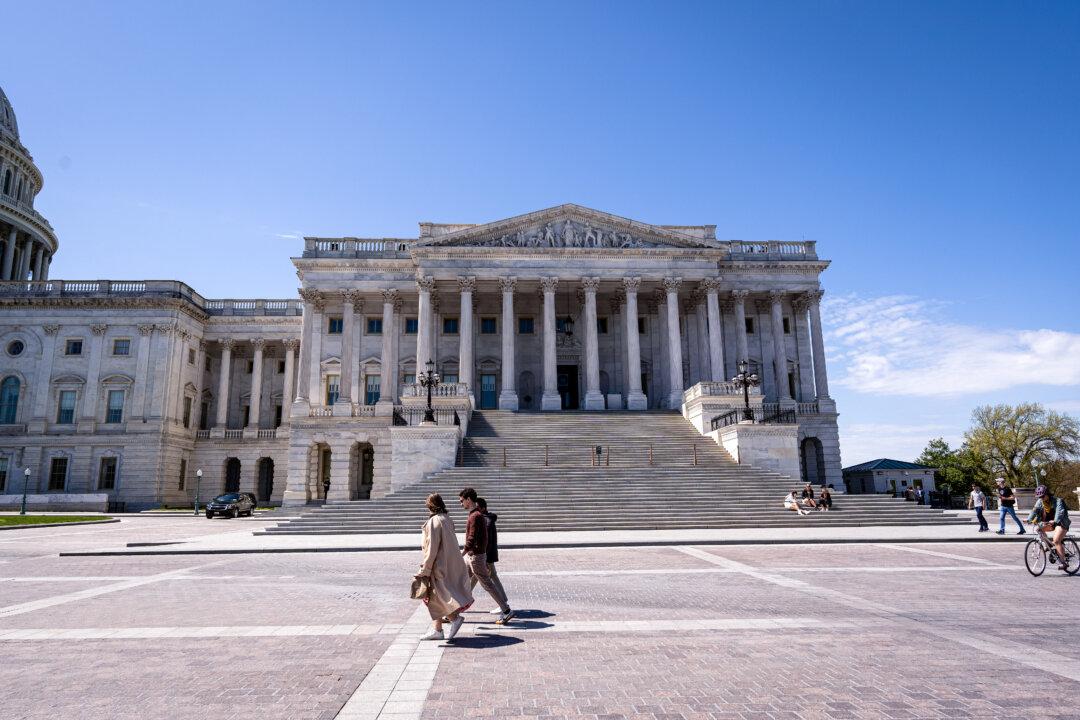The bill opens with the highest priority funding, allowing funds to continue to flow to government agencies and initiatives at current rates. These include appropriations for agencies like the Food and Drug Administration, the Department of Defense, Veteran’s Affairs facilities, and previous U.S. government research agreements.
Disaster Relief Focuses on Both Prevention And Response
The next section of the bill provides for funding to disaster relief and relevant agencies to help assist with such relief. Much of the funding in this section is devoted toward the prevention of future disasters rather than purely emergency aid.The first appropriation in this section, totaling $10 billion, goes to the Department of Agriculture. This funding, the bill says, is delegated “for necessary expenses related to losses of crops ... trees, bushes, and vines, as a consequence of droughts, wildfires, hurricanes, floods, derechos, excessive heat, winter storms, freeze, including a polar vortex, smoke exposure, quality losses of crops, and excessive moisture.”
The bill would also devote approximately $93 million to the National Oceanic and Atmospheric Administration (NOAA) “for necessary expenses related to the consequences of hurricanes and of wildfires in calendar years 2020 and 2021.”
Still, only $4.7 million of this appropriation is dedicated to repairs of NOAA equipment; the rest is dedicated to the development of new technologies and methods to better predict and prevent future disasters.
Around a third of this funding, $35 million, is ordered to be used “to improve hurricane intensity and track forecasting ... and precipitation and flood prediction, forecasting, and mitigation capabilities.” Another $20 million is dedicated to improving wildfire research, including “prediction, detection, forecasting, monitoring, data management, and communication and engagement” initiatives.
Another provision appropriates $200 million to fisheries. This funding is also meant to be used for the prevention of future damages, with the bill ordering that the funds be used “for necessary expenses associated with the mitigation of fishery disasters.”
The National Aeronautics and Space Administration, NASA, is also set to receive disaster funds under the continuing resolution. NASA, headquartered in Texas, is delegated $321.4 million “for repair at [NASA] facilities damaged by Hurricanes Zeta and Ida.”
The continuing resolution also grants the Department of Defense $565 million for naval repairs needed as a result of hurricanes and other disasters. An additional $330 million in this provision goes to the Air Force for similar repairs. The Army Corps of Engineers receives $100 million under the bill “to reduce risk from future flood and hurricanes.”
$3 billion is devoted to infrastructure development of at-risk areas to help prevent future damage from floods and major storms. Any project undertaken with this funding, the bill stipulates, must be determined “to be technically feasible, economically justified, and environmentally acceptable.” Fully half of this $3 billion must go directly to states that declared a major disaster as a result of Hurricane Ida.
To address the needs of small businesses affected by natural disasters, the bill grants the Small Business Administration (SBA) around $1.2 billion. The legislation orders the SBA to appropriate this funding as direct loans to small businesses.
Funding for Afghanistan, Resettlement of Evacuees
The resolution also provides funding to help resettle the thousands of Afghans pouring into the United States as a result of the fall of Afghanistan to the Taliban terrorist organization.The bill allocates $50 million to the Federal Bureau of Investigation “for investigative activities associated with Afghan resettlement operations.” This funding comes as many Republicans have expressed concerns over the vetting of these migrants, warning that the U.S. might let terrorists into its borders if vetting is not handled appropriately.
An additional $21.5 million is directed to the Centers for Disease Control (CDC) to aid in the mass resettlement effort. The bill explains that the funds are “for medical support, screening, and other related public health activities related to Afghan arrivals and refugees.”
Another $1.68 billion goes to the Administration for Children and Families, one of the largest allocations in the bill for resettlement.
This funding has a wide array of uses under the legislation, including providing grants and contracts to nonprofit groups “to provide culturally and linguistically appropriate services.” These services include “housing assistance, medical assistance, legal assistance, and case management assistance,” to be handled through long-term intervention and help from these qualified nonprofits.
For assistance to migrants beyond these services, the bill allocates approximately $1.08 billion more.
The section does not limit funding to domestic concerns over Afghanistan however. A further $2.2 billion in the bill is devoted to “overseas humanitarian, disaster, and civic aid.” This funding will go to Afghanistan, where many have expressed concerns of a fast-approaching humanitarian disaster in the wake of the sudden regime change.
Some Republicans have expressed concerns over these kinds of allocations. In a Senate hearing with Secretary of State Antony Blinken, Sen. Rand Paul (R-Ky.) warned that this kind of humanitarian aid is often wasted, ending up in the hands of warlords. Paul warned that the Taliban were likely to take control of any such aid sent by the United States, thus making this aid little more than a tool in aiding the Taliban cause.
Around $800 million more goes toward much the same end, humanitarian assistance in Afghanistan, though some of this humanitarian funding is allocated towards continuing to help former Afghan allies still trapped in the country escape. This section does not mention the more than 100 Americans still trapped in the country, or address solutions to rescuing those who wish to leave but have been unable to.






Friends Read Free